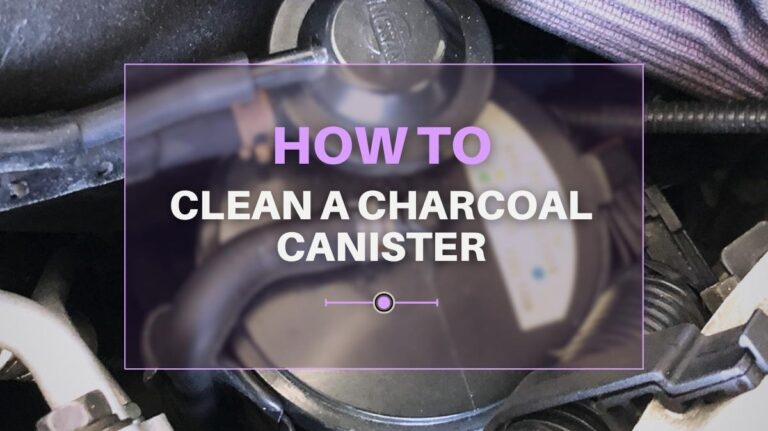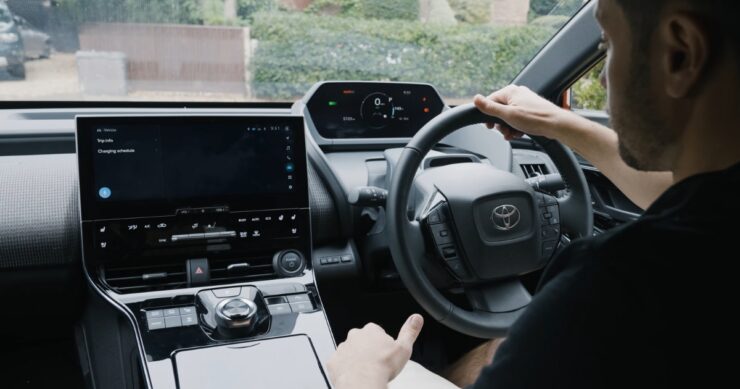A charcoal canister is a vital part of any car. Knowing how to clean a charcoal canister is very important as it tends to increase your car’s overall lifespan.
Many car owners might not know a charcoal canister exists in a car. It is not a popular part, and even those who know may not pay attention to cleaning their car charcoal canister or even know how to go about it. The charcoal canister helps absorb the vapor in the fuel when the automobile is on idle.
If the canister becomes clogged, it might be challenging to clean, so it is compulsory to notice it and clean it from time to time.
Without further ado, let’s get straight into the step-by-step guide on how to clean a charcoal canister.
What is a Charcoal Canister?
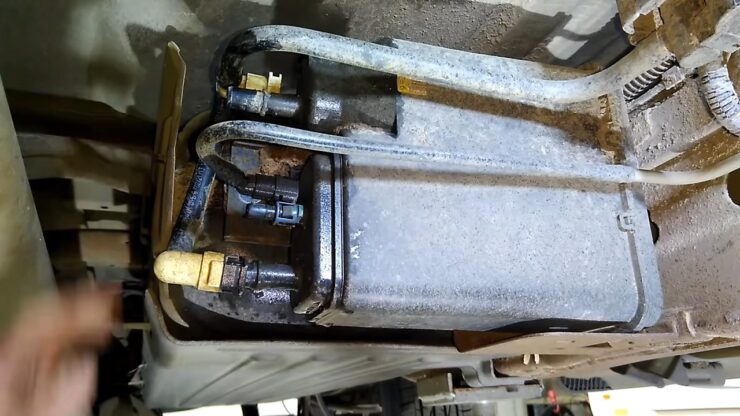
A charcoal canister is a part of the car in the emission control system that helps to collect and store the vapor emitted from the fuel in the form of black charcoal. The charcoal canister can sometimes be referred to as the EVAP canister or even the vapor canister.
Though many drivers may not know a charcoal canister exists in a car, the function cannot be overemphasized. Not only do cars possess charcoal canisters, water filters, fish tanks also possess canisters to prevent the emission of dangerous gas into the atmosphere.
A car possesses a charcoal canister because dangerous gas in the fuel combustion system should not be released directly into the atmosphere because they are dangerous to human health.
So the gasses are trapped into the canister and then back into the engine to make them less poisonous.
How does a Charcoal Canister Work?
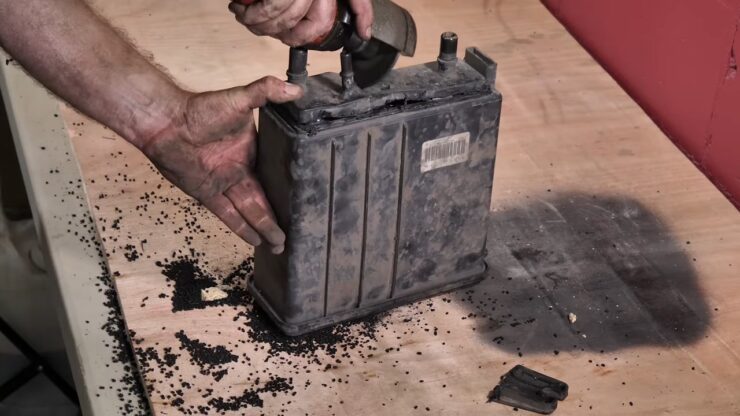
The function of a canister is to prevent harmful vapor from entering the atmosphere, causing smog underneath the vehicle to be released.
The gas tank is located underneath the vehicle’s seat, and when the gas tank is removed, you will have access to the charcoal canister.
The canister has an inlet and outlet that are located side by side. The inlet and the outlet are connected to different parts of the car system. The inlet into the fuel tank and outlet are connected to the purge valve.
The charcoal canister is activated, which means it is porous and has a large surface area. It can store a large quantity of fuel vapor. The canister works best when the car is idle. It is connected to the vent and purge lines, which carry the intake to the manifold.
Some carburetor engine designs have some connection from the carburetor bowl, so when the engine is running, the action of the piston stroke creates a pressure area in the manifold, which opens the purge valve, which draws fresh air into the bottom of the canister.
The air is drawn into the engine and burned, and the purge valve is designed to operate only at speed above the car idle. If it operates at low speed, the extra fuel vapor could upset the fuel mixture, which can cause poor idling and poor running.
A petrol engine needs a better canister than a diesel engine because petrol is more volatile.
Why do you need to clean your charcoal canister?
Cleaning your car charcoal canister also helps to prevent environmental pollution. When the canister is faulty, it releases fuel vapor into the atmosphere, harmful to people. Over time, when the vapor in the fuel is released into the canister, it turns into charcoal, and it will definitely become full and needs to be cleaned.
When the canister becomes clogged, it will reduce the function of the canister and the need for it to be cleaned. The canister can be cleaned and can be cleaned using compressed low-pressure air.
Symptoms/Signs of a Bad Charcoal Canister
When your automobile charcoal canister is faulty, it will show some sign to tell you it’s not functioning properly. The signs below should tell you your canister is faulty.
- Hard start after getting gas: This will happen when the canister is clogged and needs to be cleaned. When it’s not cleaned, and you get gas, it will take few attempts for the engine to start.
- Fuel odor: The function of the canister is to store fuel vapor and instruct the purge valve and then release it to the combustion chamber when needed. When the canister is faulty, it will allow fuel escape, and you might notice fuel smell and increased mileage.
- Unable to pump gas: The canister will be unable to pump gas if it is filled with gasoline, and it will lose its ability to absorb fuel vapor.
- Engine check light: The engine check light ensures there are no faulty parts in your car. If the canister is faulty, the engine check light will be on.
- Irrational smoke from Exhaust: When the canister is faulty, it won’t be able to absorb the fuel vapor, and everything is released into the combustion chamber, which will cause excessive smoke in your exhaust system.
Step by Step Guide for How to Clean a Charcoal Canister
To clean your charcoal canister, follow the below steps
Step1: Unmount the Canister
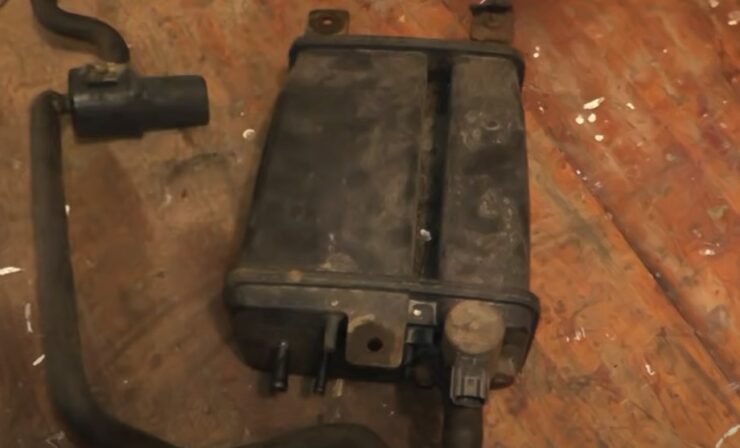
The first step to take when cleaning a charcoal canister is to unmount it from the car body. Depending on your type of car and where the canister is located, you might need to remove it from the bracket, or the process might be simple in some cars.
Step 2: Connect a vacuum pressure
After disconnecting the canister from the car body, look for a smooth surface and place the canister on it to work on. Apply pressure on the vacuum pressure till it pumps the pressure of the canister up to 50 psi. When the pressure is up to 50 psi, you can disconnect the vacuum pressure.
Step 3: Hold the upper pipe
When you have pumped enough air into the canister, be sure it is not more than 40 psi, then hold up the upper vent located at the top of the canister. The upper vent valve is different from the inlet and the outlet valve.
Step 4: Activate the vacuum pump
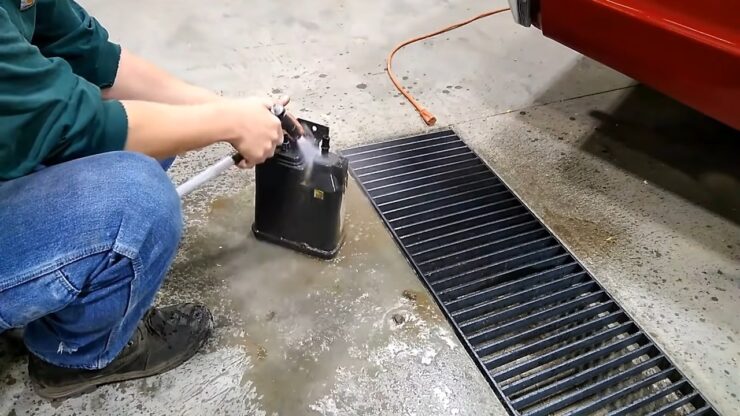
Block the inlet and outlet valve with the top of your finger while releasing air into the canister up to 50 psi. When the canister is air-tight, place your finger on the opening side of the canister and release it bit by bit.
Step 5: Ensure the air comes out
Pump air through the control valve and ensure the air is coming out through the outlet valve. As the air comes out, the canister becomes clean and free from clogging.
Step 6: Mount the canister back
After a thorough cleaning and ensuring no leakages, reinstall the canister back to its position.
Approximate Cost of the Service/Setup
If you want to set up your car canister or clean it for you by an expert when it is clogged, you will have to spend around $100-$130. If you cannot afford this cost, you have to read about our DIY process and get it done yourself.
Charcoal Canister Replacement
There are many reasons that you may need to replace your canister with a new one, the reasons include, fuel smell, Engine light on, Engine may take time to start, Too much smoke from the exhaust system. When all this happens, you need to replace your car canister.
Charcoal Canister Replacement Cost
If you need to buy a new canister for your car, you may work into the store yourself or send an expert to get it for you. Either way, you will spend about $150 to $600.
Guide for How to Test Evaporative Charcoal Canister
It is important to test the evaporative charcoal canister, as this will give you insight into the working condition of the canister. You will know if it’s faulty or it needs to be cleaned or perhaps it needs to be replaced.
Below are the step-by-step processes to test an evaporative charcoal canister.
Step 1: Find the Evaporative canister
The first step is to locate the canister mounted on the car. The canister is usually located differently on some cars, so you can check your manual for where it ha located. When you locate it, loosen the bolt attached to it and place it on a flat surface.
Step 2: Check the Canister
After you have loosened the canister, manually check the canister to ensure there are no leaks either outside or at the side of the canister. This has to be done properly because if there is a leakage somewhere, the canister won’t function very well and will pollute the environment.
Step 3: Connect a Vacuum pump
Connect a vacuum pump to the outlet port that is the purge valve on the right side. Make sure it is rightly connected because of the air pressure.
Step 4: Blow air into the canister with the pump
Press the vacuum pump faster so it can blow air through the urge valve into the canister. When the air enters, the canister should open all the ports that lead into it.
Step 5: Examine the purge valve
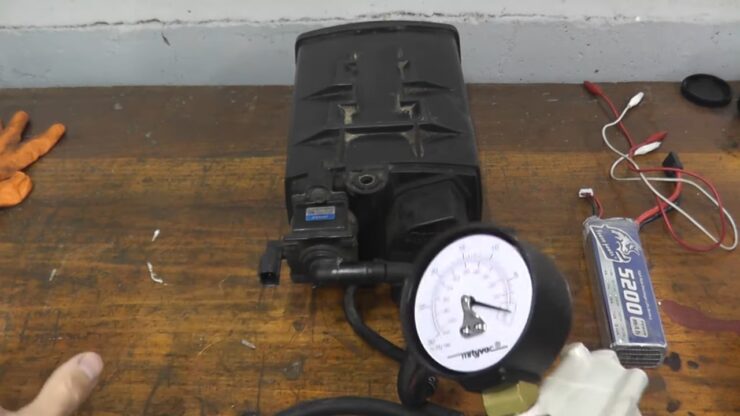
When the canister is full of air, examine it to ensure there are no leakages. If you notice any leakages, you have to replace the entire canister or only the purge valve in some cases.
Step 6: Remove the vacuum pump
Remove the vacuum pump from the canister and ensure all the openings are closed.
Tips for maintaining Canister
To make your car canister last long and save you the cost of replacing it, you need to maintain it properly.
- Clean the canister regularly
- Test for leakage
- Look out for any sign
- Clean with recommended liquid
FAQ
How to test a vapor canister?
- Find the vapor canister and check it for any damages.
- Connect a vacuum pump to the purge valve
- Activate the pump and let it pump air into the canister
- Inspect the can muster when it is airtight and be sure the air is not coming out.
- Finally, remove the pump.
What does a vapor canister do?
A vapor canister, also known as a charcoal canister, is a crucial component in a vehicle’s evaporative emissions control (EVAP) system. The EVAP system captures fuel vapors from the fuel tank and prevents them from being released into the atmosphere. The vapor canister plays a vital role in this process by absorbing and storing the fuel vapors until they can be safely burned off in the engine.
The canister is typically made up of a plastic or metal container filled with activated charcoal. As fuel vapors enter the canister, they are trapped by the charcoal, which absorbs them like a sponge. When the engine is started, a valve opens, allowing the stored vapors to be drawn into the engine and burned off as part of the combustion process.
If the vapor canister fails or becomes clogged, it can cause a variety of issues, including poor engine performance, decreased fuel efficiency, and increased emissions. Signs of a faulty vapor canister may include the illumination of the “check engine” light, a fuel odor in or around the vehicle, or difficulty starting the engine.
Can I drive my car if the canister is bad?
It is not recommended to drive your car if the vapor canister is bad. The vapor canister is an essential component of your car’s emissions control system, and if it’s not functioning correctly, it can cause problems such as reduced fuel efficiency, rough idling, and even stalling.
Additionally, driving with a faulty vapor canister can cause your car to fail an emissions test, which may result in fines or other penalties. It’s best to have the canister replaced or repaired as soon as possible to ensure that your car is running efficiently and meeting emissions standards.
When should my canister be replaced?
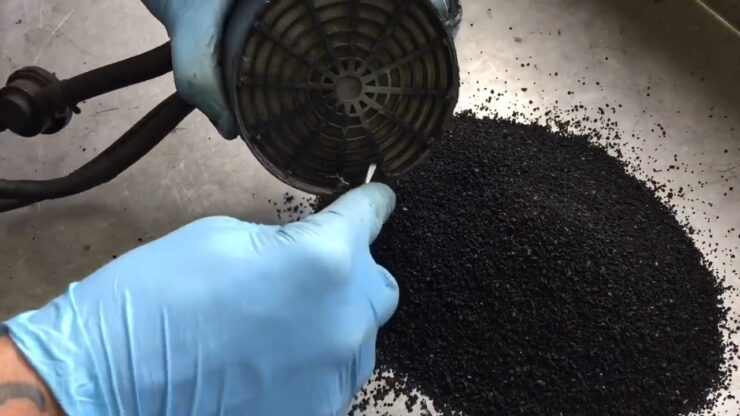
The lifespan of a vapor canister varies depending on the make and model of the vehicle, as well as how often and under what conditions the vehicle is driven. Generally, it is recommended to replace the vapor canister every 60,000 to 100,000 miles, or as indicated by the manufacturer’s guidelines in the vehicle’s owner’s manual.
However, if you notice any signs of a faulty vapor canister, such as the check engine light turning on, the smell of fuel vapours or a decrease in fuel efficiency, it is important to have it inspected by a qualified mechanic as soon as possible. Delaying repairs can cause further damage to your vehicle and potentially harm the environment.
Can I disconnect my charcoal canister?
No, it is not recommended to disconnect the charcoal canister from your car’s emissions system. The canister plays an important role in reducing harmful emissions and pollutants that can harm the environment and your health.
Disconnecting the canister may also cause the check engine light to turn on and can result in a failed emissions test during vehicle inspections. It is best to have any issues with the canister diagnosed and repaired by a qualified mechanic.
Verdict
The charcoal canister does a lot of work in preventing environmental pollution. Therefore all car owners should ensure they clean their canister regularly and replace it when it is faulty.
That’s all about how to clean a charcoal canister, and we hope you have learned something about cleaning your car canister yourself. If you do, please do well to share with other car owners and leave a comment.
Related Posts:
- How To Reset Oxygen Sensor of Car/Truck in 2024 -…
- How to Paint Chrome Bumpers - DIY Guide & Easy Instructions
- How to Reset Idle After Replacing Battery from…
- How to Fix a Flooded Engine - DIY Guide & Easy Instructions
- How to Replace Toyota Corolla Headlight Assembly in…
- How to Blackout Car Emblems & Plasti Dip Tail Lights…

